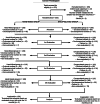Survival rate of primary molar restorations is not influenced by hand mixed or encapsulated GIC: 24 months RCT
- PMID: 34301217
- PMCID: PMC8305516
- DOI: 10.1186/s12903-021-01710-0
Survival rate of primary molar restorations is not influenced by hand mixed or encapsulated GIC: 24 months RCT
Abstract
Background: Glass ionomer cements (GIC) have been considered the top option to restore primary teeth by dentists. The most common supply forms are hand mixed and encapsulated GIC. There is a lack of information about the impact of different GIC supply forms on restoration survival.
Methods: This randomized clinical trial compared the survival rate of occlusal and occlusoproximal restorations in primary molars using two glass ionomer cements versions: hand-mixed (H/M) and encapsulated (ENC) after 24 months. Children aged 3-10 years who presented dentin caries lesions in primary molars were selected at School of Dentistry, University of São Paulo, Brazil. They were randomly assigned to groups: H /M (Fuji IX®, GC Europe) or ENC (Equia Fill®, GC Europe). The occurrence of restoration failure was evaluated by two blinded and calibrated examiners. The analyses were performed in Stata 13 (StataCorp, USA). To evaluate the primary outcome (restoration survival), we performed a survival analysis. Additionally an intention to treat (ITT) analysis were done at 24 months of follow-up. Cox Regression with shared frailty was performed to assess association between restoration failure and independent variables (α = 5%).
Results: A total of 324 restorations were performed in 145 children. The survival for H/M group was 58.2% and 60.1% for ENC, with no difference (p = 0.738). Occlusoproximal restorations had lower survival rate when compared to occlusal ones (HR = 3.83; p < 0.001).
Conclusions: The survival rate in primary molars is not influenced by the different supply forms of GIC. Also, occlusoproximal restorations present reduced performances when compared to occlusal cavities.
Trial registration: This randomized clinical trial was registered on ClinicalTrials.Gov on 10/15/2014 under protocol (NCT02274142).
Keywords: Dental restoration; Glass ionomer cement; Randomized Clinical Trials.
© 2021. The Author(s).
Conflict of interest statement
The authors declare that they do not have competing interests.
Figures
References
Publication types
MeSH terms
Substances
Associated data
LinkOut - more resources
Full Text Sources
Medical
Miscellaneous



